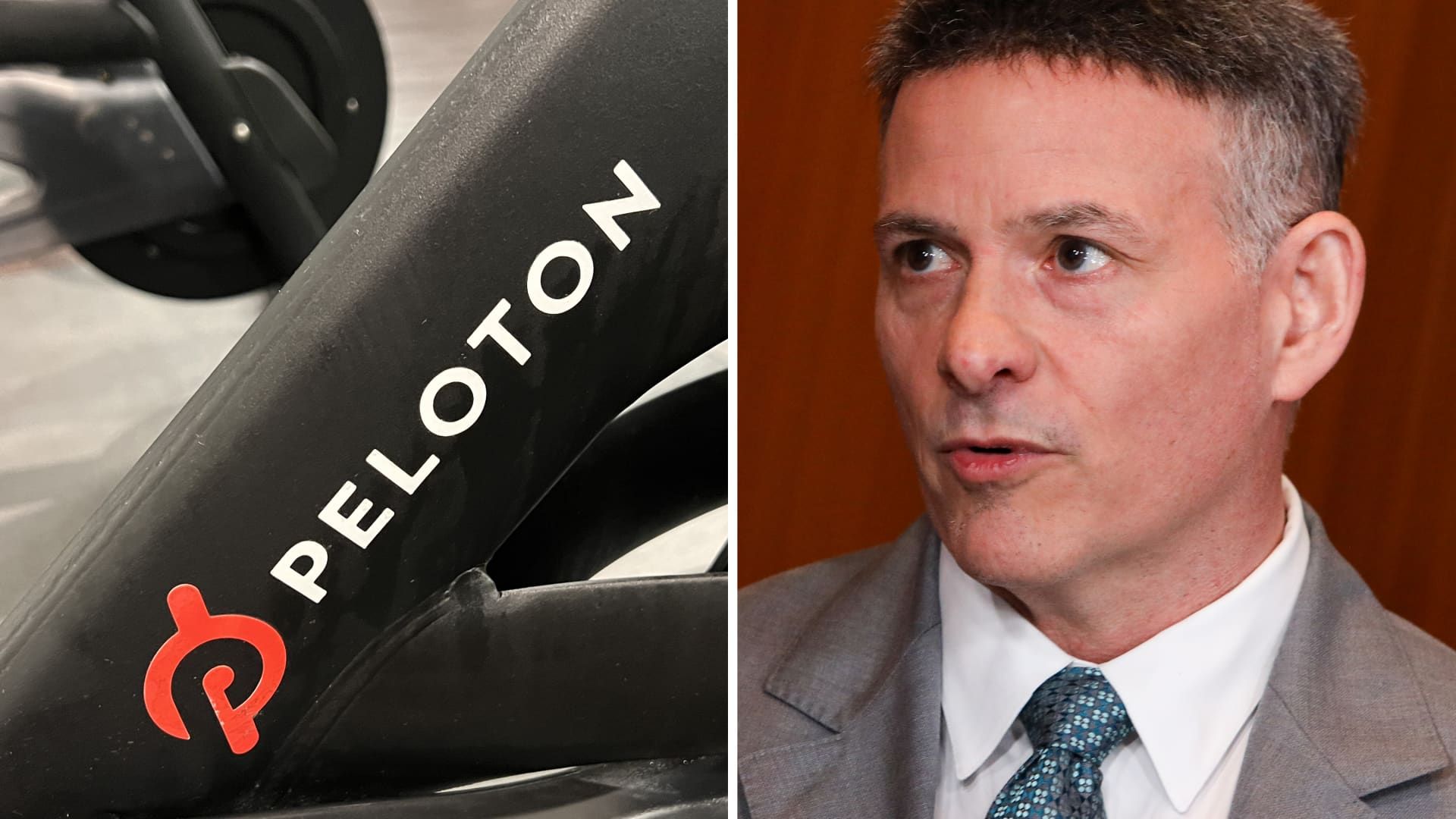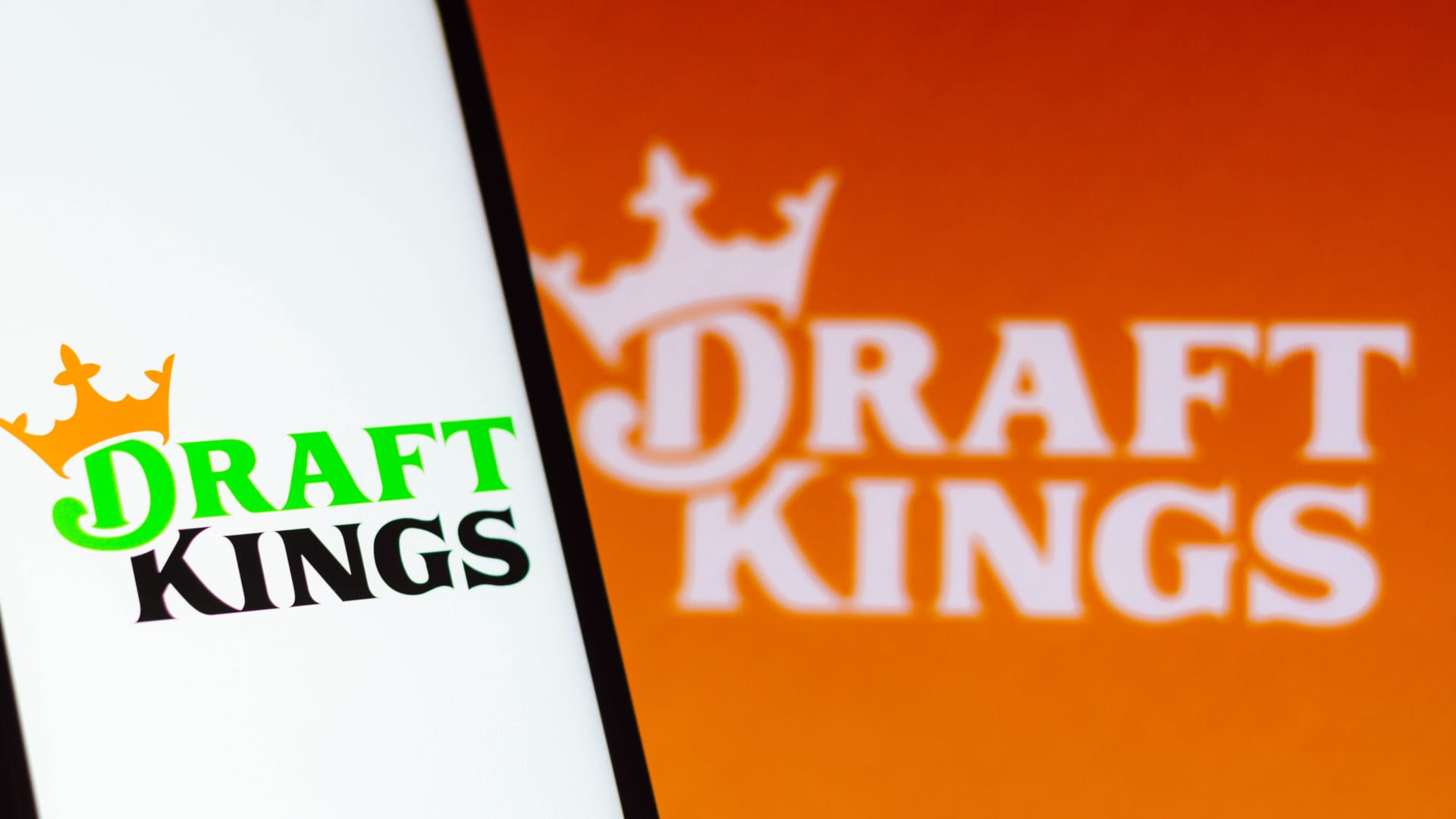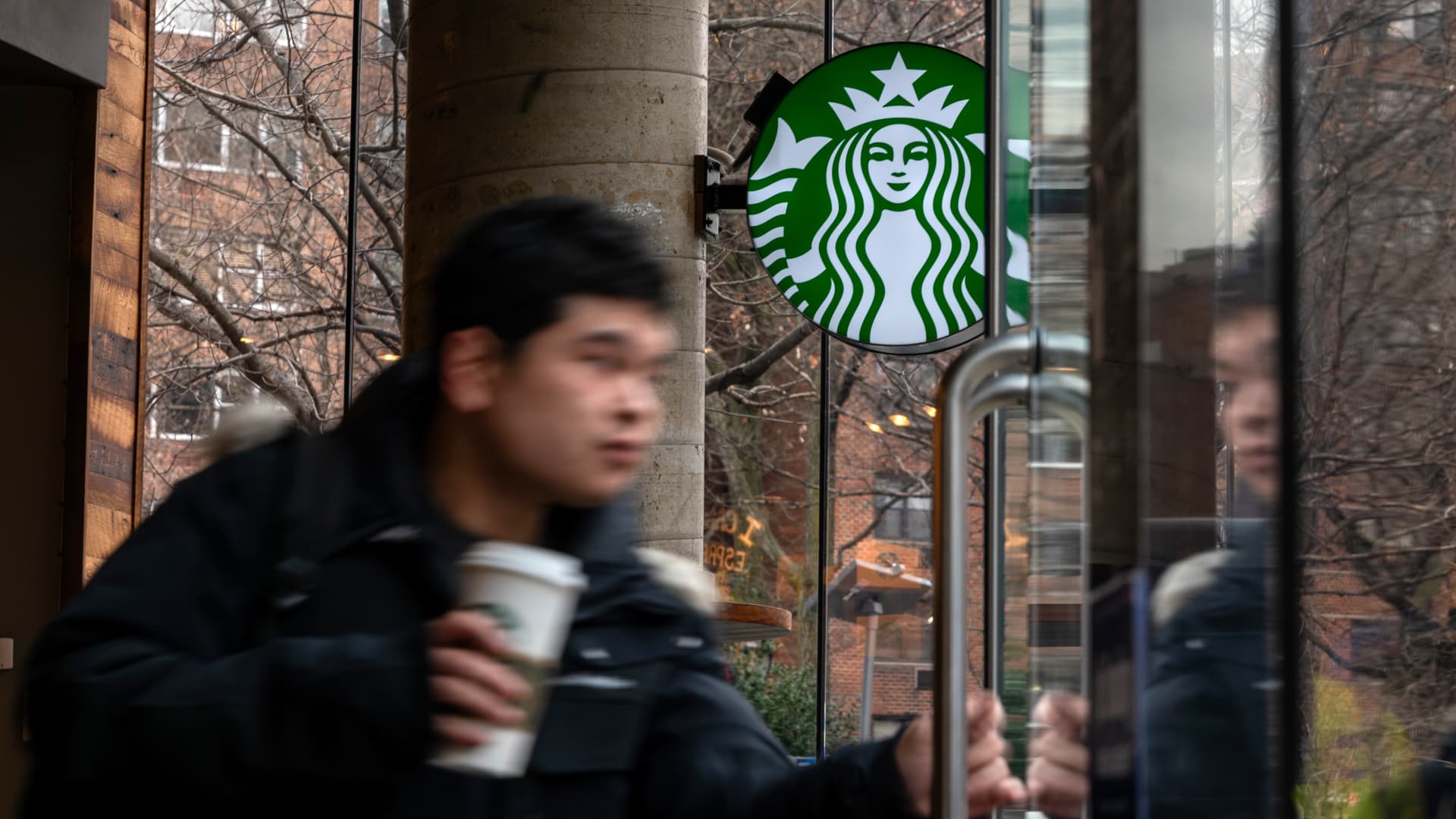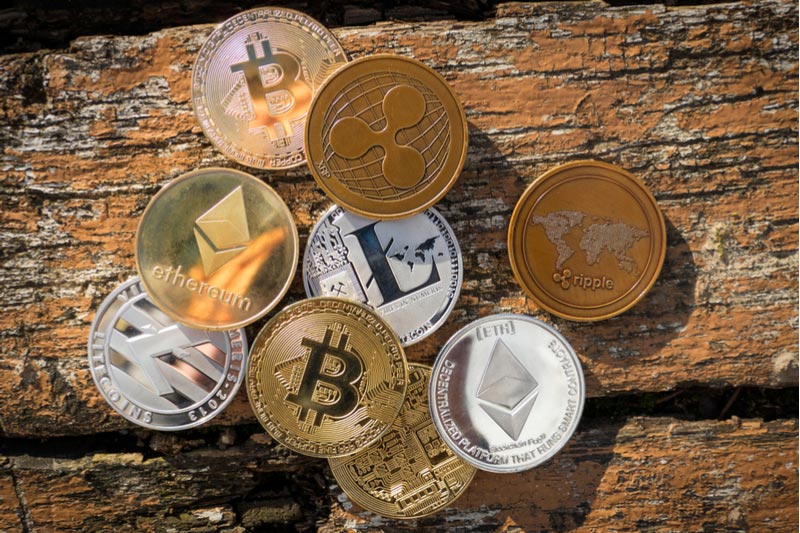David Enhorn presents Peloton at the Robin Hood Investor Conference.
Fake images (left) | CNBC (R)
Greenlight Capital's David Einhorn thinks Platoon could trade as high as $31.50 per share if the company cuts costs, which could double its current adjusted EBITDA projections, CNBC has learned.
That's about five times the current price of its shares, which were trading around $6.20 at midday on Friday.
In a presentation Einhorn gave at the Robin Hood Investor Conference on Wednesday, Einhorn pedaled a Peloton bike as he explained the company's many mistakes over the years and the ample runway it has to turn its business around, according to a copy of the presentation. obtained by CNBC.
If it can generate $450 million in EBITDA, about double its current projections, Peloton could trade between $7.50 and $31.50 per share, based on a benchmark study of comparable companies, Einhorn said.
Notably, Greenlight's analysis assumes “no growth in subscription revenue from new customers or price increases or other new initiatives, such as activation fees for the growing used bike market and international expansion,” Einhorn said.
“Facing bankruptcy can force change,” he said during the speech. “Peloton has started to right-size and the cash burn has stopped. It refinanced its debt to delay maturities. And with a loyal customer base paying $44 a month, it's a valuable subscription business.”
Einhorn structured the presentation as if he were an instructor giving an exercise class, occasionally yelling at the investors in the room. The platform's first page was titled “15 Minute 'Stock Pitch Ride'” and features an image of Einhorn on a Peloton bike.
“Let's start with some thank yous,” Einhorn said at the beginning of the speech, mentioning various investors and sponsors, similar to the way a Peloton instructor would call attendees to a class.
Each page of the platform displays a leaderboard of other apparent cyclists, including investor Bill Ackman and Robin Hood CEO Richard Buery, along with Einhorn's speed, cadence and endurance, mimicking what users see while taking a Peloton bike class.
Greenlight and Peloton declined to comment to CNBC.
Greenlight, which had a $6.8 million stake in the company as of June 30, conducted a benchmark study analyzing Peloton's cost structure. The firm compared Peloton to three sets of peer companies: fitness companies like Planet Fitnessconsumer subscription companies like Toughand online consumer subscription companies like Spotify and netflix.
The study found that while Peloton has already cut costs to curb its cash burn, it is seeing “essentially zero adjusted EBITDA compared to its peer average of $406 million,” Einhorn said in the speech.
“For its peers, more than a third of gross profit flows into EBITDA. Part of the problem is that Peloton spends too much on research and development,” Einhorn said. “Just as an example, Peloton spends about twice as much R&D as adidas spend… in dollar terms. And Adidas has 8 times more sales than Peloton and an order of magnitude more product lines.”
Peloton stock-based compensation expense of $305 million in fiscal 2024 It's also twice the average of its peers and comparable to much larger companies like Spotify and Netflix, which are 30 and 140 times larger, respectively, Einhorn said.
At the center of the thesis is Peloton's high-margin subscription business, which generated $1.71 billion in revenue in fiscal 2024 with a gross margin of about 68%. If Peloton can make big cost cuts, the company could generate much more free cash flow and EBITDA without needing to sell more bikes and treadmills, and without needing to grow its subscriber base.
Earlier this year, Peloton announced plans to lay off 15% of its staff, close retail showrooms and adjust its international sales plans, among other cost-saving initiatives. It expects those cuts could reduce annual run-rate spending by more than $200 million by the end of fiscal year 2025.
In August, Peloton said it expects to be able to post adjusted EBITDA of between $200 million and $250 million in fiscal 2025. But Einhorn said that if the company aligns its cost structure with the benchmark, “there should be between $400 million and “500 million dollars of EBITDA.” of the current subscription revenue base.”
Companies generating that range of EBITDA tend to trade between nine and 32 times that amount, implying a potential Peloton share price of between $7.50 on the low end and $31.50 on the high end. if it reaches $450 million in EBITDA, he said.
To get there, Einhorn said the company needs new direction. In August, Peloton's interim co-CEO Karen Boone said she believes the new top executive will be in place when the company reports earnings, which are now scheduled for Thursday.
“The good thing about our thesis is that we don't have to convince Peloton that this is the right approach,” Einhorn said. “Peloton's interim co-CEOs are telling the same story of a high-margin, recurring subscription revenue stream business. They also implemented an initial cost-cutting plan, which still leaves plenty of room for the new CEO.”
He said the company continues to earn top reviews among consumers and fitness publications and has a tremendously loyal customer base. He added that although fitness fans are returning to the gym, home workouts are here to stay.
“Exercising comfortably at home is not a fad,” says Einhorn. “And a trend toward healthier lifestyles should drive underlying subscriber growth over time.”










